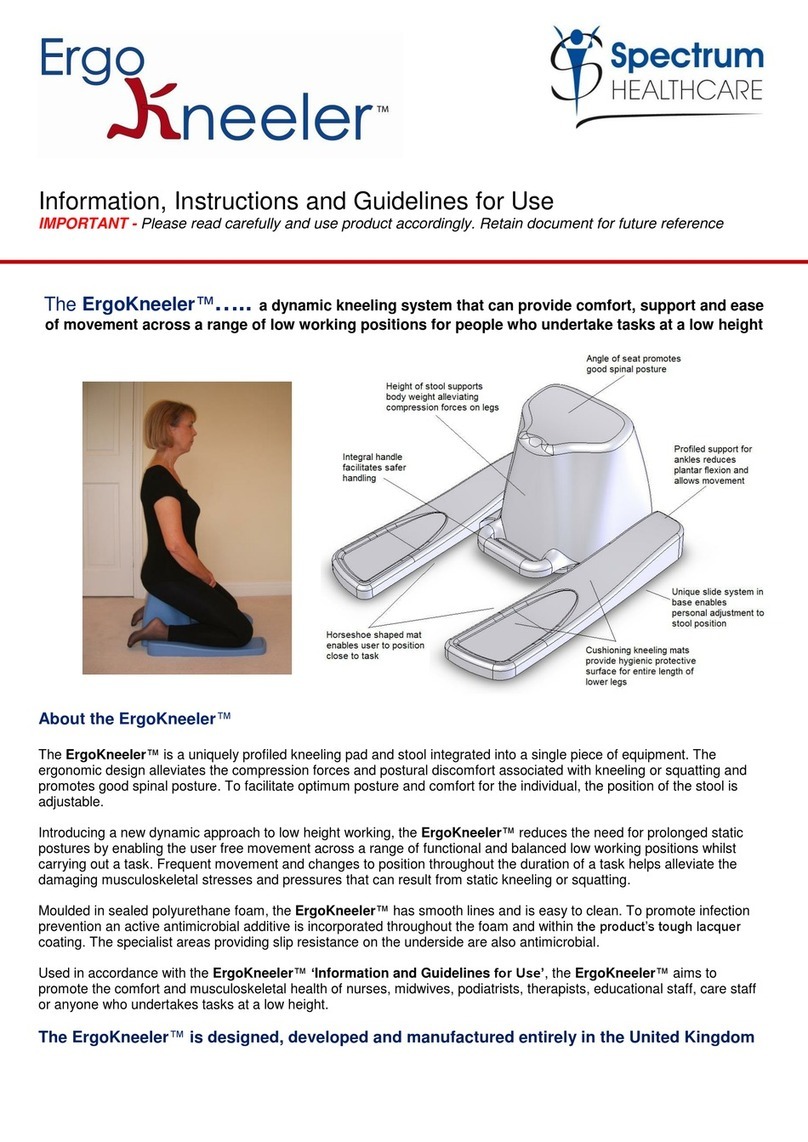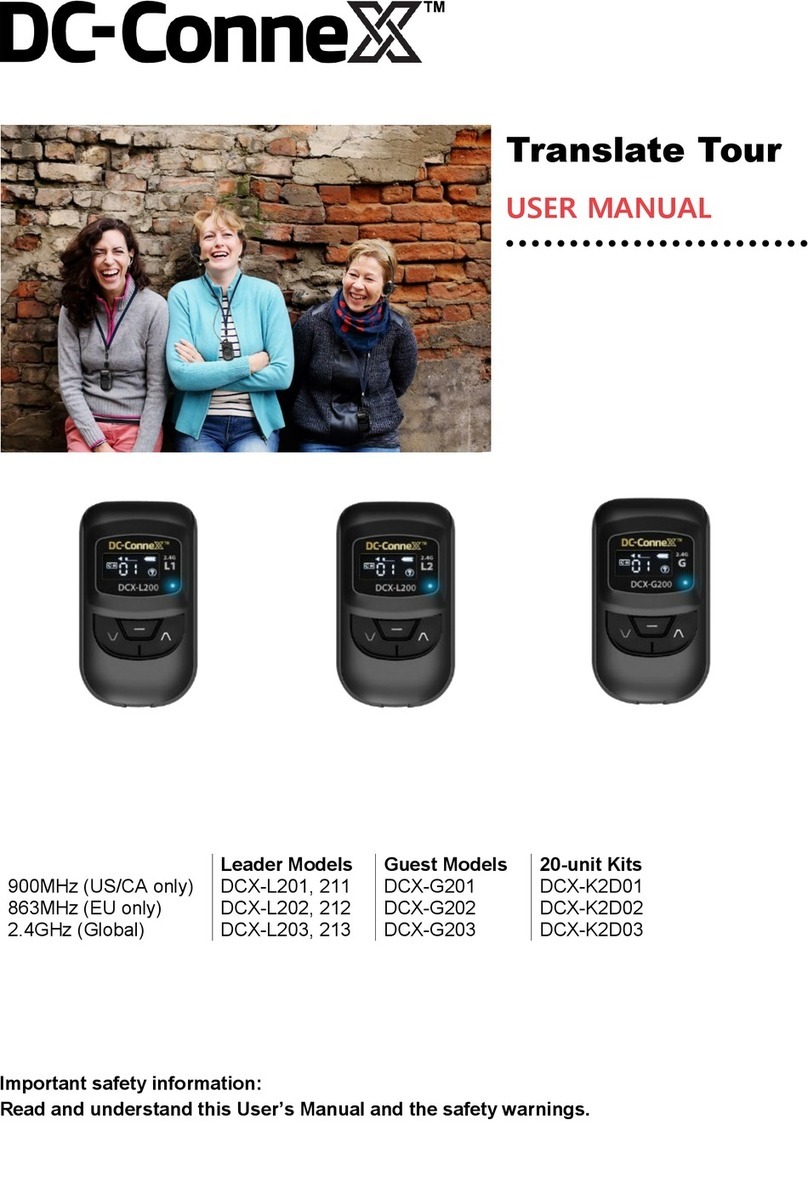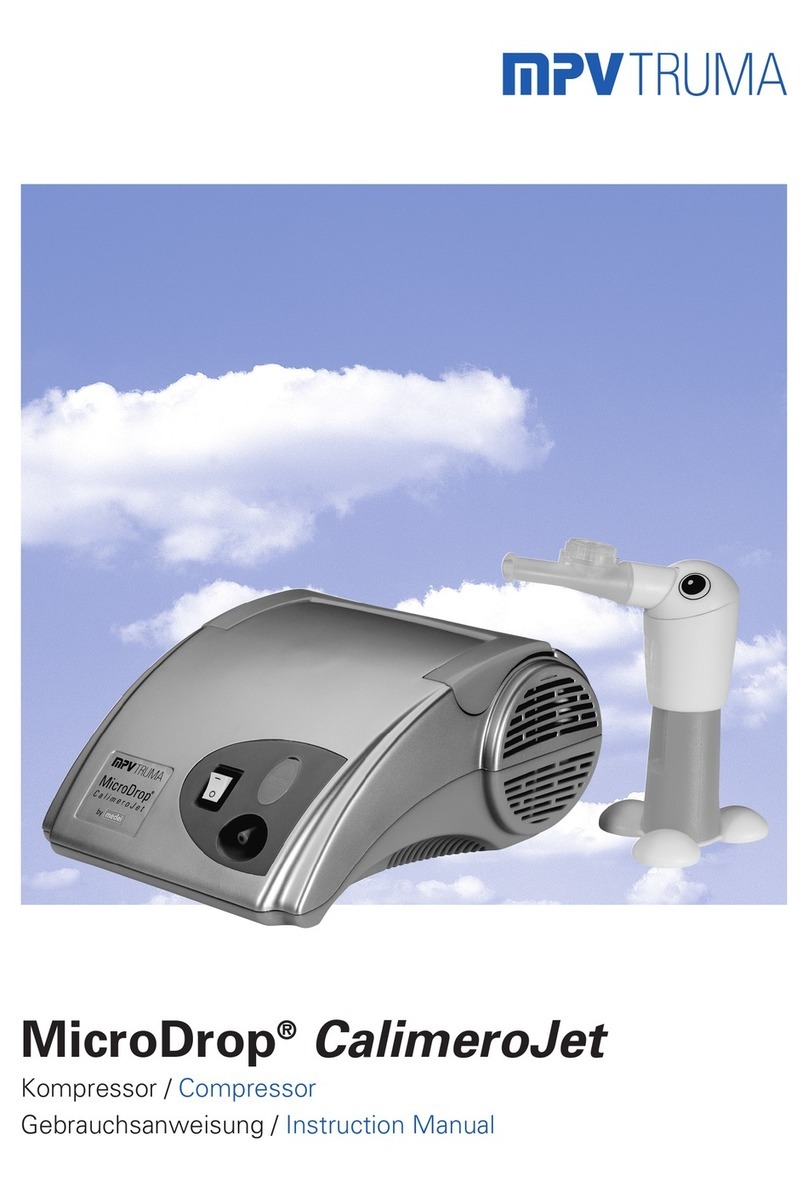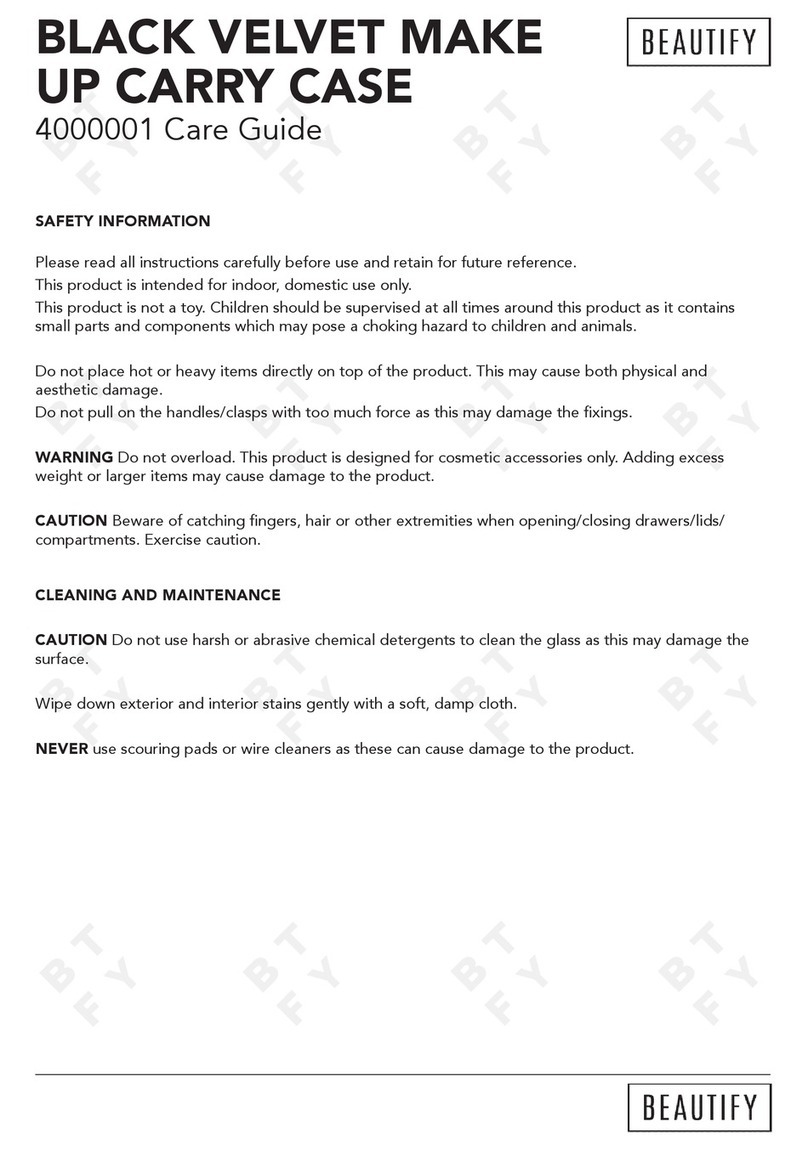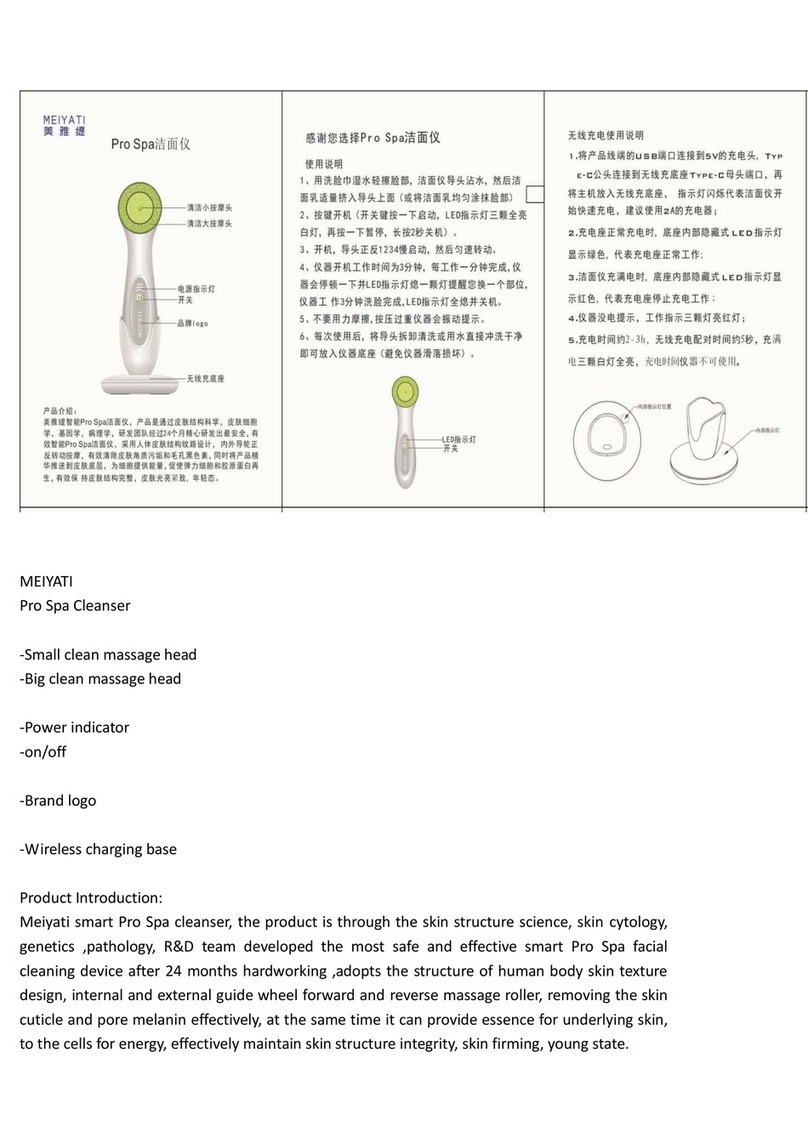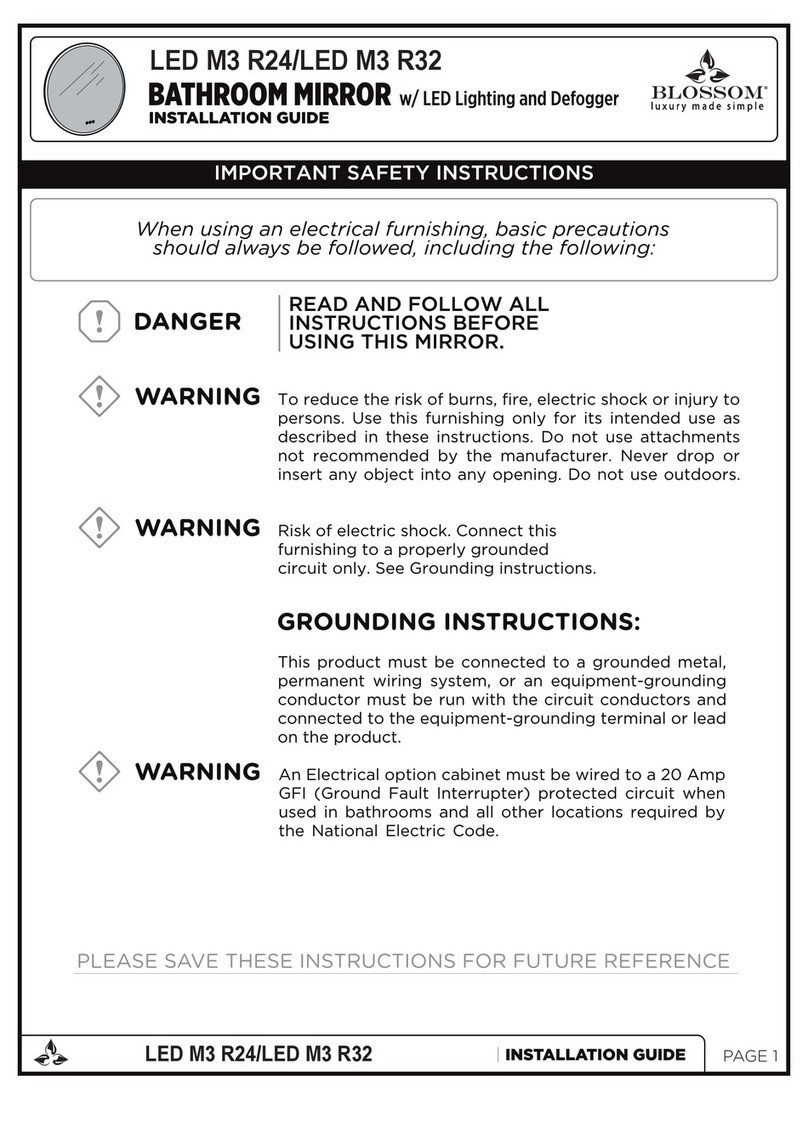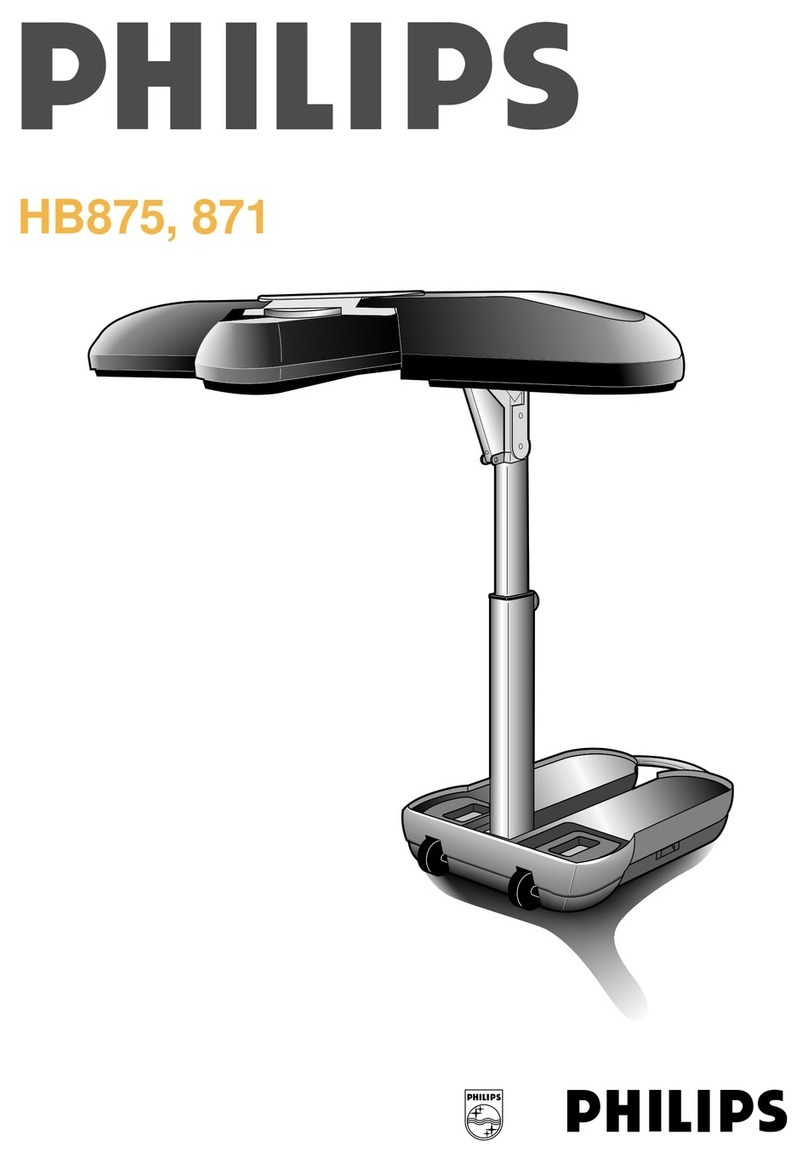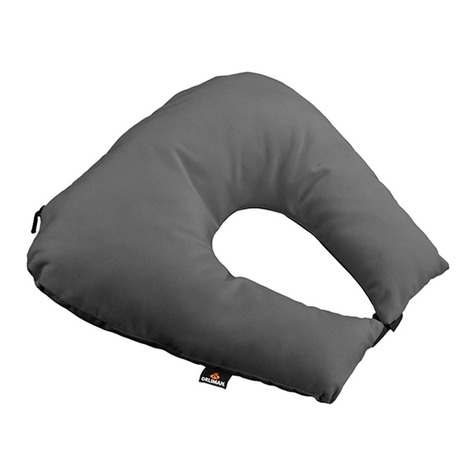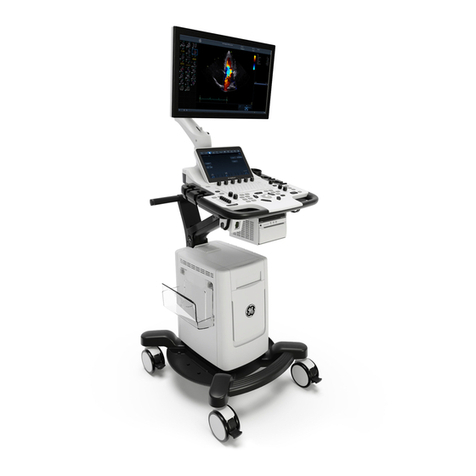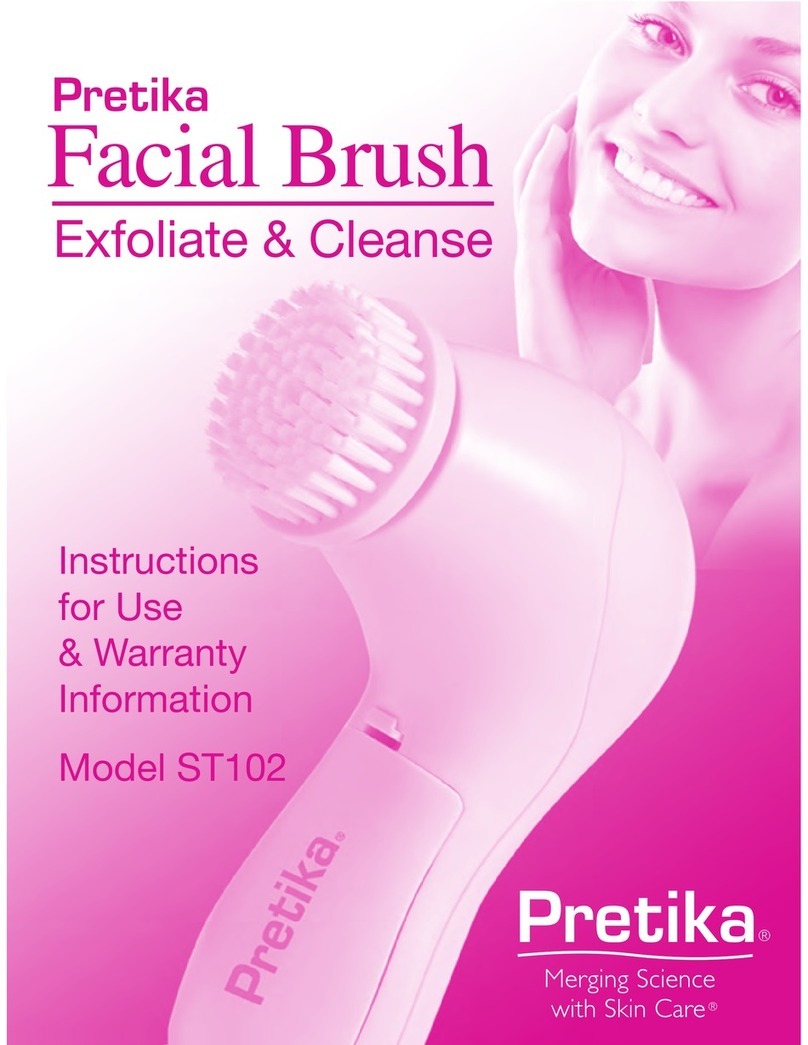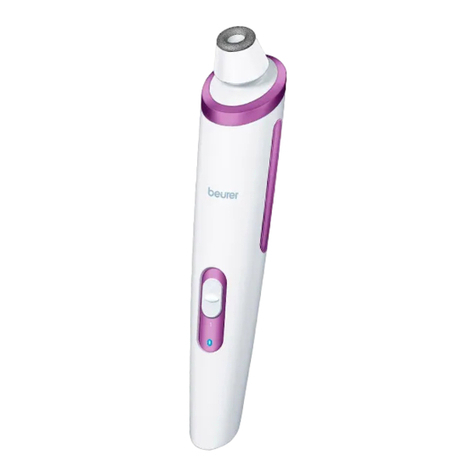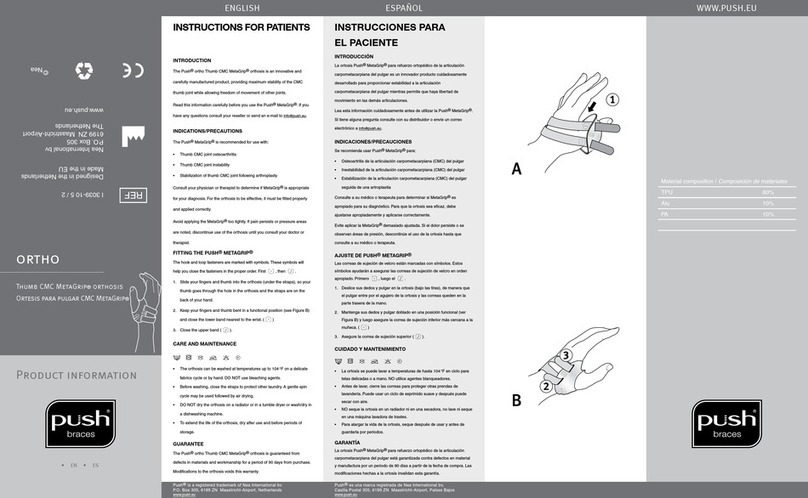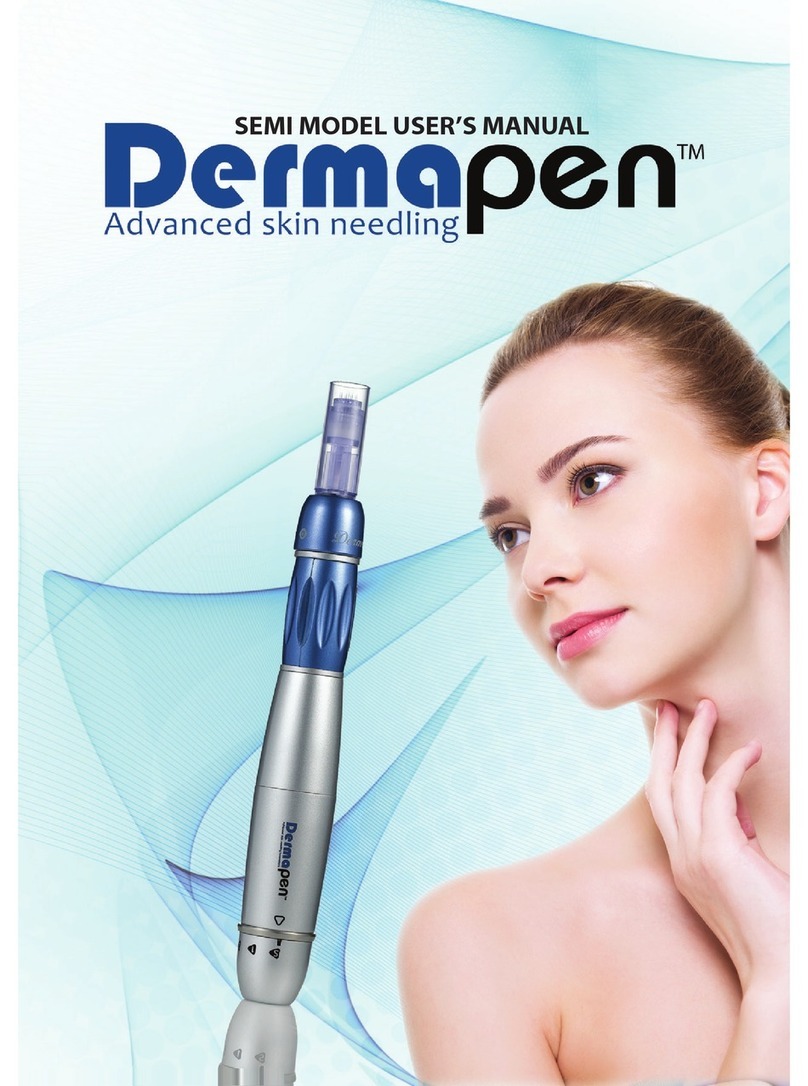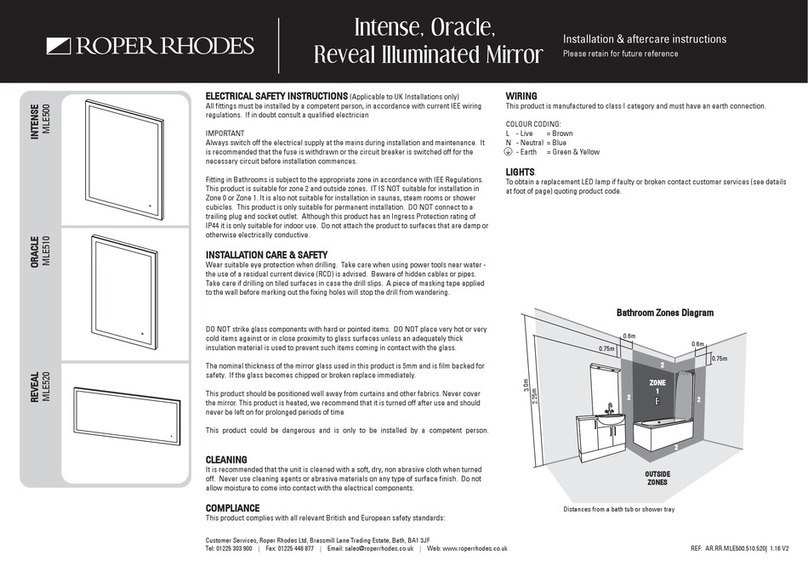Spectrum Healthcare ErgoRaiser Instruction Manual

Information, Instructions and Guidelines for Use
IMPORTANT –Please read carefully and use product accordingly. Retain document for future reference
The ErgoRaiser™. . . an ergonomically designed modular limb support with the versatility to meet
the comfort and support needs of both patient/client and practitioner. With superior infection prevention
properties, it is simple to use and has minimal maintenance costs.
The versatility of the design enables comfortable support for a limb from either floor level
or raised surfaces such as a plinth, bed or table. The sturdiness of the support can assist
the practitioner in having both hands free to carry out the procedure.
Moulded in polyethylene and polyurethane, and containing an active antimicrobial agent,
the smooth lines and open design ensure all areas are accessible for efficient and
effective cleaning.
The multi-positional, easy to clean support pad eliminates the ongoing expense and
environmental impact of disposable slings, ensuring the ErgoRaiser™ is both
economical and eco-friendly.
Integral handles enable the ErgoRaiser™ to be easily moved, handled and transported.
The top module and pad may be stowed within the lower module to aid transportation
and storage. An optional shoulder strap is also available.
At floor level, when used in conjunction with its sister product the ErgoKneeler™, the two
devices form a very effective system for managing the entire kneeling posture; however,
the ErgoRaiser™ also works well with any other kneeling aid or simply by itself.
About the ErgoRaiser™
Lightweight and modular in design, the ErgoRaiser™ may be assembled and configured in a
variety of ways to provide a wide range of support options and heights of elevation. This range
can enable patients/clients, including many with more complex mobility and treatment/care
needs, to have their limb comfortably supported in a raised position. The musculoskeletal
health and wellbeing of both patient/client and practitioner can therefore be facilitated and a
more comfortable, efficient and interactive experience afforded to both parties.
Introduction
Undertaking any form of treatment or care procedure to a patient/client’s limb can be a posturally awkward and
physically stressful experience that challenges the comfort, energy and physical wellbeing of both the health/care
practitioner and patient/client. By supporting the limb at a raised working height during the procedure, many of the
postural and operational difficulties that cause physical stressing can be alleviated and the risks to musculoskeletal
health more easily managed.
The ErgoRaiser™is designed, developed and manufactured entirely in the United Kingdom
The ErgoRaiser™ can also provide effective support for individuals undergoing a limb recovery/rehabilitation
programme. For example: post-surgery/injury, management of pain/swelling, Return to Work programme,
therapy programme. Some other areas of use are within exercise/sport programmes and beauty/nail treatments.

Introducing the ErgoRaiser™to a patient/client
The ability of patients/clients to tolerate a limb in an elevated position will vary widely and there is no one height, angle
of support or duration that will suit every individual, nor be appropriate for every procedure or practitioner. The
practitioner must assess both the use and the support options of the ErgoRaiser™ with each individual patient/client
prior to use - the following points should be considered within that assessment:
Appropriate positions for the patient/client - any limitations imposed by: restricted range of movement, medical
condition, discomfort, level of understanding or acceptance
Tissue viability and patient/client’s ability to register and communicate discomfort, pressure and tissue stressing.
Required procedure/ intervention: which position(s) are appropriate for the patient/client and functional for the
practitioner. Could varying the position during the procedure benefit the individual and the practitioner?
Duration of procedure: patient/client’s comfort and acceptance of the position for the required time.
Patient/client’s ability to move their limb into position: any assistance they may require. How can that assistance be
most safely provided?
The patient/client’s comfort, tissue viability and ongoing acceptance must be carefully monitored throughout the
treatment/care session.
Configurations and positions of support
Please note:
The following photographs present a sample range of ErgoRaiser™ positions; other positions may also be found to
be appropriate dependent upon assessed need. When considering any position, the practitioner must ensure that it
is a safe, stable and appropriate option for the patient/client and for themselves.
For procedures that require management of fluids/tissue debris, in any
configuration/position, paper or plastic sheet may be positioned under
the pad and draped according to need.
In any position, care must always be taken to ensure the limb is
centrally positioned on the pad.
In any configuration, dependent upon the angle of the limb and the patient’s comfort needs, the ErgoRaiser™ may
be positioned so that the pad slopes either away from or towards the patient.
High Configuration - support from the floor
Low and Extra Low Configurations - support from the floor
The following positions may be particularly appropriate when the patient/client’s hip flexion or knee extension is
compromised, and/or are seated on a low chair.
To aid treatment or care, it may be helpful to vary the limb between ‘support to the leg’ and ‘support to the foot’
positions during the procedure.

Multiple Configurations - support on a raised surface
Please note: any raised surface must be designed to support the human load and be assessed as providing a safe
stable platform for the required module(s)
Further information, instructions and guidelines
Registered: Safe Working Load in all configurations –80kg (BS EN 12182:2012.)
The support pad
The ergonomic shaping of the pad in conjunction with the polyurethane foam of which it is made, comfortably cradles
the limb in all positions. The pad may be transferred to whichever surface is to form the support platform for the limb
and is anchored in position by fitting the raised plug on the underside securely into the appropriate socket on the
module. Care must be taken that the pad is securely in position and clean before allowing the limb to rest.
Stowing the top module and pad inside the lower module
To enable stowage, the top module and pad assembly must be correctly orientated and aligned
to match the shape of the cavity. To aid this process the small arch (a) on the side wall of the
top module, should be aligned with the raised guide rail (b) on an inside wall of the cavity. The
top module and pad will then slide into the lower module and can be secured in place by the lid.
When unloading, the small arch provides a finger hold to aid withdrawal of the assembly.
Fitting the lid
With the latch facing outwards, position the shape of the lid to match the shape of the cavity.
Slide the latch to open position and then insert the protruding tag on the far side of the lid into
the corresponding slot on the inside wall of the module. Allow the lid to rest on the internal
ledge and then slide the latch into its corresponding slot.
Tighten both knobs on the latch to ensure security of closed latch.
To aid infection prevention, there are no hinges on the lid to trap dirt and bacteria, and the
entire latch mechanism may be dismantled for cleaning.
Dismantling and re-assembling the latch
Before dismantling the latch assembly, please note the exact position of all component parts (see diag.) and ensure
they are placed in the same order when re-assembling; failure to do this will render the latch ineffective.
Dismantling - Release and remove both knobs (1). Remove the latch bar
(2). Release and remove both hex nuts (3). Remove bolts (4).
Re-assembly –Push the bolts (4) through the holes from the underside of
the lid. From the outer side of the lid, thread and wind the hex nuts (3) onto
the bolts and fully tighten. Re-position the latch bar (2) over the bolts,
chamfered end uppermost and facing the near outer edge of the lid.
Re-position the top knobs (1) and tighten.

Moving and Handling
WARNING –please note: Care must be exercised when handling/operating/cleaning around any of the slots
or sockets on this product to avoid any risk of finger trapping.
Combined handling weight of all modules –approximately 2kg. Users are advised to follow the Moving and
Handling Policy, Training and Procedures of their own organisation when handling the ErgoRaiser™.
Carrying option 1: A handle on the top of the lower module for use when the lower module only is required, or
when the top module is stowed. An optional shoulder strap for attachment to this handle is also available.
Carrying option 2: A handhold on the rear aspect of the lower module enables both modules when in ‘High
Configuration’ to be carried securely as a single unit. Please note: Before lifting, ensure modules are correctly
stacked.
To minimise moving and handling, store the ErgoRaiser™ as close as reasonably practicable to the area of use.
For domiciliary visits, take only the required module(s) into the home. As with all other low height equipment, care
must be taken in positioning the ErgoRaiser™ in order to avoid trip hazards.
When used on floors/surfaces that are not slip resistant, some slight movement of the module(s) may be
experienced; a DYCEM anti-slip mat is provided for positioning beneath the module in such situations.
Please remove the protective polythene film from both sides of the mat before use. When not in use, the mat
can be rolled up and stowed inside the top module but must be removed to enable the top module to be stacked
onto the lower, as for ‘High Configuration’.
Infection Prevention and Cleaning
A permanent antimicrobial agent is incorporated throughout the entire moulded material of all parts, including the
DYCEM anti-slip mat. Labels are sealed beneath the surface of the product.
General cleaning instruction for all parts –wash in warm soapy water, rinse and dry.
Please note: Avoid pushing fingers into slots or sockets; clean by threading a cloth or wipe through the
openings.
Tolerant of 1% bleach solution and antimicrobial wipes; do not use harsh or abrasive cleaning products or
materials.
Cleaning regime should be in accordance with the individual employer’s cleaning and infection prevention policies
and protocols.
Storage and Maintenance
Prior to storage, ensure all parts are clean. Store with the top module and pad stowed inside the lower module.
Please note: When removing from storage, check that the lid and latch are securely in place before attempting to
lift.
The seals on the underside of the top and lower modules are part of the manufacturing process and should not be
removed.
Prior to use, check that the ErgoRaiser™ is clean and free from damage. Damaged parts must be replaced as
necessary.
For further information please contact:
Spectrum Healthcare (UK) Ltd.1 Kingsthorpe Business Centre, 63 Studland Road, Kingsthorpe,
Northampton NN2 6NE
Tel: +44 (0)1793 762928 email: sales@spectrumhealthcare.co.uk website: www.spectrumhealthcare.co.uk
The ErgoRaiser™ is a European Community Registered Design. No 001615311-0001
© Linda J Darwent 2017. All rights reserved
Spectrum Healthcare (UK) Ltd is grateful to the Manual Handling and Back Care professionals of the
Yorkshire Back Exchange who supported the development of the ErgoRaiser™and kindly reviewed
the content of these Guidelines
Table of contents
Other Spectrum Healthcare Personal Care Product manuals
